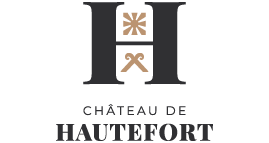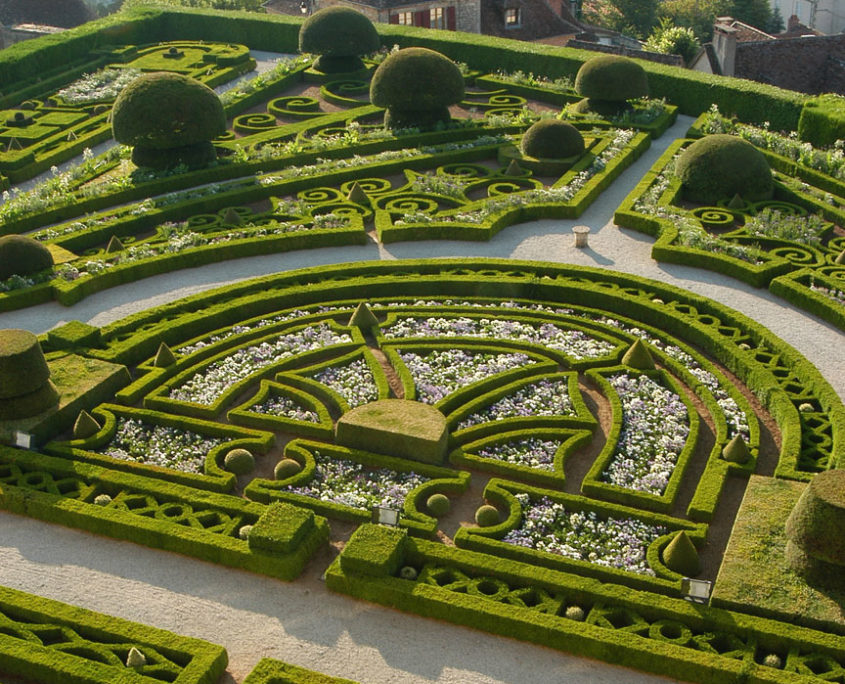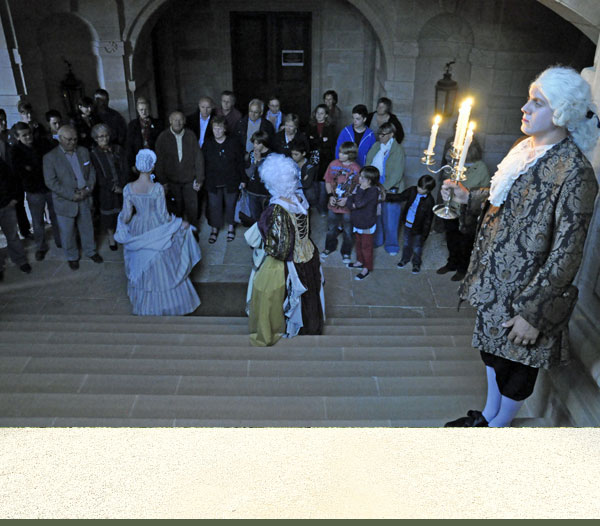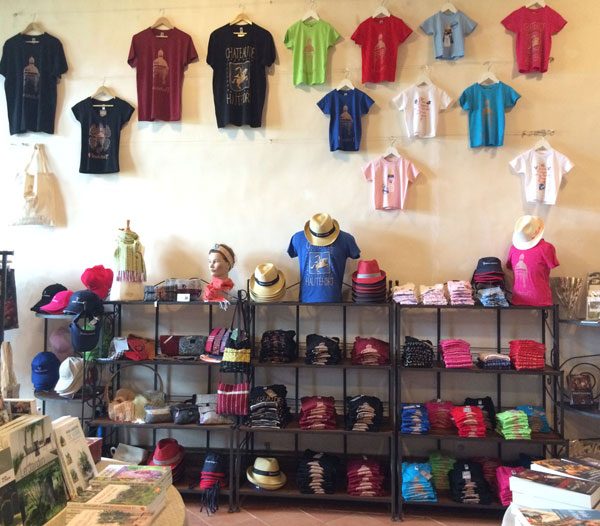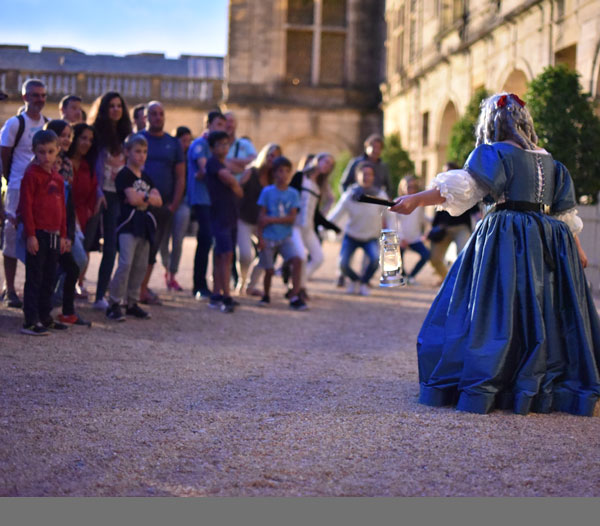THE FRENCH GARDEN
As early as the 17th century, there were gardens in Hautefort, but these were replaced in the following centuries to make room for those we admire today.
Gardens in a few statistics
The surface area of Hautefort’ s formal garden is more than 3 hectares of boxwood framed gardens and hedges, punctuated by yew topiaries, trimmed entirely by hand twice a year. The unique tunnel of greenery in thuja is 70 meters long, and can provide welcome shade on hot days. The magnolias espaliered on the south retaining wall of the main courtyard overlook the boxwood parterre on the terrace below, in the form of the arms of Hautefort, composed of 10 000 plants.
Gestures for the planet
We favour a sustainable management policy for green spaces. 100% of the boxwood is trimmed by hand shears, as is 30% of the yew trees. The cuttings and plant residue are mulched to reduces evaporation and enrich the soil.
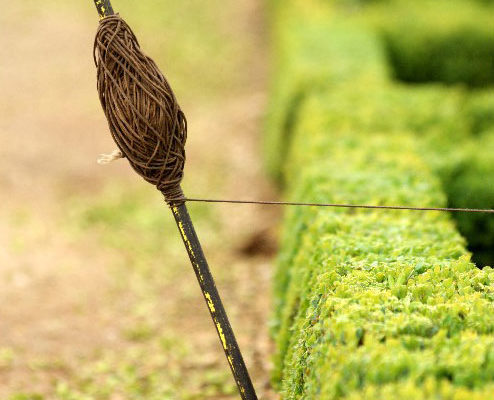
Boxwood sculptures and embroidery
In 1857, the Count of Choulot undertook a complete renovation of the Hautefort gardens and park at the request of Count Maxence of Damas, owner of Hautefort and son of the Baron of Damas and Charlotte-Laure d’Hautefort.
The Count of Choulot envisaged an ambitious plan that integrated the castle, the gardens, the park and the surrounding landscape into a coherent whole. The former forecourt on the east side of the castle was landscaped with French formal gardens and lawns bordered with flower beds. Another parterre was created at the base of the terrace of the main courtyard. Boxwood formed into embroidery shapes were added over the years to the basic design of the Count of Choulot.
The transformation of the garden continued in the 20th century by the Baron and Baroness Bastard, mainly from 1950 to 1980. On the esplanade on the western side of the castle, a tunnel of greenery in thuja (northern white cedar), doubled by a boxwood parterre are on the site of the former stables, pulled down at the end of the 19th century. The parterres designed by Choulot are preserved, augmented by boxwood and yew topiary added by the Baron and Baroness Bastard. The northern terrace is also planted with boxwood, alternating with yew columns. The French gardens form a green envelope around the castle, arranged in terraces and parterres and are conducive to an unforgettable walk with spectacular views over the surrounding countryside.
